PPSpy is a relatively new player in the product research space, but it’s already gaining traction among ecommerce sellers and dropshippers who want a clear view of what’s trending.
Whether you’re looking to identify winning products, analyze ad creatives, or keep an eye on competitor stores, PPSpy promises a comprehensive and easy-to-use solution.
In this review, I’ll walk through PPSpy’s features, pricing, pros and cons, and how it compares to other top tools like Minea and Dropispy.
I also tested the tool hands-on to see how well it performs for ecommerce sellers trying to scale fast.
Why You Can Trust This Review
I’ve tested over a dozen product spy tools, including Dropispy, BigSpy, AdSpy, Minea, and more.
My focus is on reviewing these tools from a research and usability standpoint, with a particular interest in how they support ecommerce sellers.
Each review is based on hands-on testing, side-by-side comparisons, and a detailed evaluation of the features that matter most to store owners—like product discovery, ad tracking, and competitor analysis.
PPSpy Pros & Cons
Best For: Dropshippers and ecommerce sellers who want quick product validation and competitor insights.
PPSpy Rating: 4.6 out of 5 stars
Pros 👍
- Tracks products and ads across TikTok, Facebook, and Instagram
- Filters for engagement, country, and niche
- Includes Shopify store insights and product breakdowns
- Clean and fast user interface
- Affordable pricing compared to other spy tools
Cons 👎
- Lacks advanced AI features for ad copy and creative angles
- Limited creative filtering (compared to Minea)
- Smaller ad database than older tools like AdSpy
Quick Summary
Here’s what stood out most in my experience with PPSpy:
What I Like
✔️ Easy-to-use dashboard with clean filters
✔️ Accurate and up-to-date TikTok product insights
✔️ Store spying feature reveals traffic, apps, and bestsellers
✔️ Affordable monthly plans without long-term lock-in
What I Don’t Like
❌ Creative filtering options are basic
❌ No AI assistant or tool for ad copy inspiration
❌ Some Shopify store data is limited to public info only
Getting Started With PPSpy


Getting started with PPSpy was fast.
I didn’t need to install any browser extensions or download any plugins. I signed up with just an email address and was immediately taken to the dashboard, where I could choose between:
Everything is clearly laid out, and filters appear at the top of each section.
Here’s what impressed me early on:
1. Simple Onboarding
No complicated setup. I jumped in and searched for trending TikTok ads within seconds.
2. Helpful Filters
I could sort by:
- Platform (TikTok, Facebook, Instagram)
- Country
- Product category
- Engagement type (likes, comments, shares)
- Post date
These filters helped narrow down thousands of ads to just the products that fit my store’s niche.
3. No Credit Card Required
There’s a free version that lets you test out the tool before committing. While limited, it’s good enough to explore the UI and get a feel for the platform.
PPSpy Features: What You Can Do


PPSpy is focused on product discovery, ad intelligence, and store tracking. I tested each of these features and here’s how they held up.
1. Winning Product Finder
This is the core feature, where I found dozens of recently launched and trending products across TikTok and Facebook. Each product includes:
- Thumbnail preview
- Engagement metrics (likes, shares, comments)
- Platform source
- Direct links to the product and ad
- Store URL
You can click on any ad to get more detail on the creative, product price, and even where it’s being sold.
2. Shopify Store Search
This was surprisingly useful. I could enter a keyword or niche (e.g., “fitness” or “pets”) and PPSpy would list matching stores. For each one, I could see:
- Estimated traffic
- Store apps
- Product pages
- Top-performing products
- Country targeting
This allowed me to quickly reverse-engineer what successful Shopify stores were doing, from product layout to upsell techniques.
3. Ad Library
The ad section includes active promotions from TikTok, Facebook, and Instagram. While not as extensive as AdSpy, it’s more focused on ecommerce.
You can filter ads by:
- Platform
- Country
- Product price
- Ad type (video/image)
- Engagement
This is great for identifying what creatives are getting real traction and which ad formats are driving the most interaction.
Feature Comparison Table
| Feature | PPSpy | Minea | Dropispy | AdSpy |
|---|---|---|---|---|
| TikTok Ad Tracking | Yes | Yes | No | No |
| Facebook Ad Tracking | Yes | Yes | Yes | Yes |
| Instagram Ad Tracking | Yes | Yes | No | No |
| Shopify Store Tracking | Yes | Limited | Yes | No |
| AI Ad Copy Generator | No | Yes | No | No |
| Price (Starting) | $29/month | $49/month | $19/month | $149/month |
| Ease of Use | Very Easy | Easy | Moderate | Difficult |
When comparing PPSpy to other popular product spy tools, it holds its own in several key areas.
Unlike Dropispy and AdSpy, PPSpy includes TikTok ad tracking—a major advantage as TikTok continues to drive ecommerce trends.
It also covers Facebook and Instagram ads, making it one of the few tools offering full multi-platform visibility.
Shopify store tracking is fully supported, allowing users to analyze store traffic, bestsellers, and installed apps, whereas Minea offers limited access and AdSpy lacks this feature altogether.
One area where PPSpy falls short is AI ad copy generation, a feature only Minea currently provides.
However, PPSpy stands out for its ease of use and affordability, with a starting price of $29 per month and a user interface that’s easy to navigate—even for beginners.
In contrast, tools like AdSpy start at a much higher price and come with a steeper learning curve. Overall, PPSpy offers a balanced mix of essential features at a competitive price point.
My Experience Using PPSpy Daily
I used PPSpy as part of my product research process for a full week across two Shopify stores.
Here’s how it fit into my workflow.
What I Used It For
- Tracking viral TikTok ads in real time
- Finding stores in my niche and checking their traffic
- Analyzing competitor’s upsell funnels and page structure
- Saving product ideas to test
I found the tool especially helpful when brainstorming new product angles.
What Worked Best
- Fast product validation using real engagement data
- Store tracking that helped me improve my own site layout
- Finding under-the-radar products before they saturated
The TikTok tracking stood out. I was able to spot products gaining traction before they exploded on other platforms.
What Could Be Better
- I wish there were better tools for sorting ad creatives by hooks, text, and angles
- Some Shopify store profiles didn’t have much data—likely because they were new or private
Also, while the platform is generally smooth, the mobile experience could be improved. I often do quick product research on my phone, and some filter features didn’t translate well to smaller screens.
PPSpy Pricing Breakdown
Here’s a quick look at PPSpy’s plans as of September 2025.
| Plan | Price | Best For |
|---|---|---|
| Free | $0/month | Browsing the platform |
| Starter | $29/month | Beginners testing new products |
| Pro | $59/month | Scaling stores and teams |
| Enterprise | Custom pricing | Agencies or large-scale brands |
Each plan includes:
- Unlimited ad views (except Free)
- Product tracking
- Shopify store insights
- Saved searches
There’s no annual commitment, and you can cancel anytime.
Compared to other spy tools, PPSpy is priced fairly for what you get.
What stood out to me is that you get real-time TikTok and Facebook ad data starting at the lowest paid tier.
Many tools lock this behind more expensive plans. This makes PPSpy a good entry-level option for small businesses and solo marketers.
Is PPSpy Worth the Price?
If you’re selling on Shopify, TikTok, or running Facebook ads, yes—PPSpy is a smart investment.
For $29 to $59 per month, you can save hours of product research time and get immediate insights into what your competitors are doing.
Here’s who I think will benefit most:
- Dropshippers looking for new winners
- Ecommerce sellers scaling with TikTok ads
- Store owners launching new niches
- Agencies managing multiple product stores
It might not be the best fit if you:
- Want deep AI-powered creative tools
- Need historical ad tracking going back years
- Are only using organic traffic and not paid ads
It fills a specific need—quick product research with up-to-date ad data—without overcomplicating the interface.
You won’t find every enterprise-level feature here, but for the price, it does its job well and gets out of the way.
Alternatives to Consider
If PPSpy doesn’t meet your needs, here are a few solid alternatives:
| Tool | Best For | Starting Price |
|---|---|---|
| Minea | Creative ad filtering | $49/month |
| Dropispy | Facebook-only product research | $19/month |
| AdSpy | Massive ad database | $149/month |
| BigSpy | Multi-platform with wider focus | $99/month |
While each has strengths, PPSpy hits a great middle ground for speed, accuracy, and ease of use.
Minea is ideal for marketers who want deeper insights into ad creatives. It includes AI-based analysis, creative angles, and audience targeting filters—useful for more advanced media buyers.
Dropispy is a good entry-level tool for sellers focused mainly on Facebook. It’s budget-friendly and easy to use but lacks multi-platform coverage, which could limit broader market research.
AdSpy offers one of the largest ad databases available. It’s best suited for larger teams or agencies that need access to a high volume of historical ad data, but its steep price may be too much for individual sellers.
BigSpy supports multiple ad platforms including YouTube and Pinterest, making it a better fit for brands with a broad content strategy. However, the UI can feel cluttered and less refined compared to newer tools like PPSpy.
Final Verdict: Should You Try PPSpy?
After testing PPSpy across multiple stores and campaigns, I can confidently say that it’s one of the more practical and accessible spy tools available in 2025.
It does exactly what it promises—helps you find high-performing products and analyze your competition without the complexity of bigger tools.
You don’t need to be a seasoned marketer or developer to use it. If you’re looking to speed up product research and get real insight into what’s working, PPSpy is definitely worth trying.
It won’t replace every tool in your tech stack, but it’s a highly focused solution that delivers where it counts.
For sellers serious about staying ahead of trends and moving fast on product opportunities, it’s a worthwhile tool to have.






